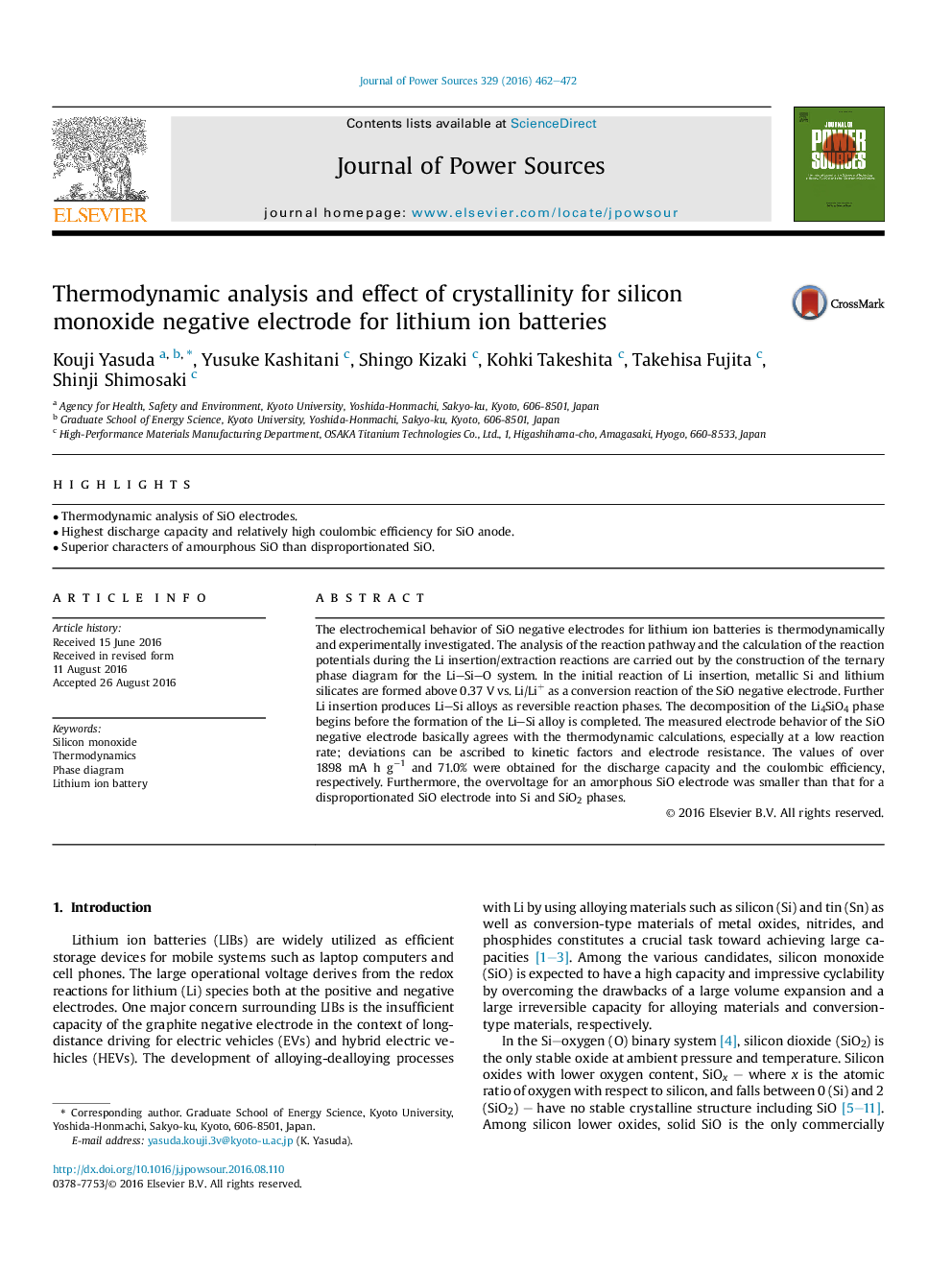| Article ID | Journal | Published Year | Pages | File Type |
|---|---|---|---|---|
| 7726725 | Journal of Power Sources | 2016 | 11 Pages |
Abstract
The electrochemical behavior of SiO negative electrodes for lithium ion batteries is thermodynamically and experimentally investigated. The analysis of the reaction pathway and the calculation of the reaction potentials during the Li insertion/extraction reactions are carried out by the construction of the ternary phase diagram for the Li-Si-O system. In the initial reaction of Li insertion, metallic Si and lithium silicates are formed above 0.37 V vs. Li/Li+ as a conversion reaction of the SiO negative electrode. Further Li insertion produces Li-Si alloys as reversible reaction phases. The decomposition of the Li4SiO4 phase begins before the formation of the Li-Si alloy is completed. The measured electrode behavior of the SiO negative electrode basically agrees with the thermodynamic calculations, especially at a low reaction rate; deviations can be ascribed to kinetic factors and electrode resistance. The values of over 1898 mA h gâ1 and 71.0% were obtained for the discharge capacity and the coulombic efficiency, respectively. Furthermore, the overvoltage for an amorphous SiO electrode was smaller than that for a disproportionated SiO electrode into Si and SiO2 phases.
Related Topics
Physical Sciences and Engineering
Chemistry
Electrochemistry
Authors
Kouji Yasuda, Yusuke Kashitani, Shingo Kizaki, Kohki Takeshita, Takehisa Fujita, Shinji Shimosaki,
